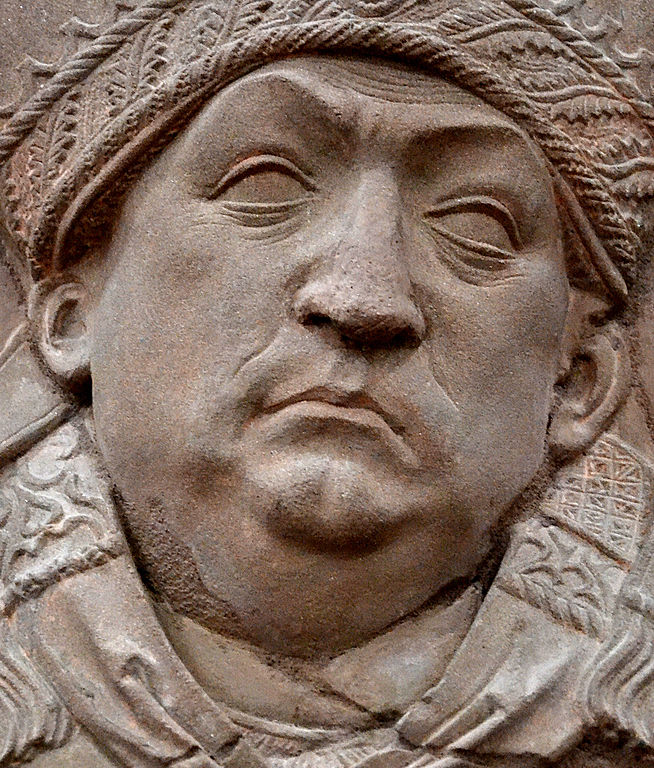Johannes Trithemius
Johannes Trithemius (1 February 1462 – 13 December 1516), born Johann Heidenberg, was a German Benedictine abbot and a polymath who was active in the German Renaissance as a lexicographer, chronicler, cryptographer, and occultist. He is considered the founder of modern cryptography (a claimed shared with Leon Battista Alberti and steganography, as well as the founder of bibliography and literary studies as branches of knowledge. He had considerable influence on the development of early modern and modern occultism.
The byname Trithemius refers to his native town of Trittenheim on the Moselle River, at the time part of the Electorate of Trier.
Early life
When Johannes was still an infant, his father Johann von Heidenburg died. His stepfather, whom his mother Elisabeth married seven years later, was hostile to education and thus Johannes could only learn in secret and with many difficulties. He learned Greek, Latin, and Hebrew. When he was 17 years old he escaped from his home and wandered around looking for good teachers, travelling to Trier, Cologne, the Netherlands, and Heidelberg.
He studied at the University of Heidelberg.
As an abbot
Travelling from the university to his home town in 1482, he was surprised by a snowstorm and took refuge in the Benedictine abbey of Sponheim near Bad Kreuznach. He decided to stay and was elected abbot in 1483, at the age of twenty-one. He often served as featured speaker and chapter secretary at the Bursfelde Congregation's annual chapter from 1492 to 1503, the annual meeting of reform-minded abbots. Trithemius also supervised the visits of the Congregation's abbeys.
In Sponheim, he set out to transform the abbey from a neglected and undisciplined place into a centre of learning. In his time, the abbey library increased from around fifty items to more than two thousand.
His efforts did not meet with praise, and his reputation as a magician did not further his acceptance. Increasing differences with the convent led to his resignation in 1506, when he decided to take up the offer of the Bishop of Würzburg, Lorenz von Bibra (bishop from 1495 to 1519), to become the abbot of St. James's Abbey, the Schottenkloster in Würzburg. He remained there until the end of his life.
As an author
Trithemius wrote extensively as a historian, starting with a chronicle of Sponheim and culminating in a two-volume work on the history of Hirsau Abbey. His work was distinguished by mastery of the Latin language and eloquent phrasing, yet it was soon discovered that he inserted several fictional passages into his works. Even during Trithemius's lifetime, several critics pointed out the invented sources he used. His forgery regarding the connection between the Franks and the Trojans was part of a larger project to establish a link between the current dynasty of Austria with ancient heroes.
While his colleagues like Jakob Mennel and Ladislaus Suntheim often inserted invented ancestors in their works, Trithemius invented entire sources, such as Hunibald, supposedly a Scythian historian. For his research on monasteries, he utilized “Meginfrid,” an imagined early chronicler of Fulda and Meginfrid's nonexistent treatise De temporibus gratiae to substantiate Trithemius's ideal of monastic piety and erudition, which were supposed to be the same values shared by the monks of the ninth century. Others opine that Meginfrid was not strictly forgery but the combination of wishful thinking with faulty memory.
Death
Trithemius was buried in this abbey's church; a tombstone by the famous Tilman Riemenschneider was erected in his honor. In 1825, the tombstone was moved to the Neumünster church, next to the cathedral. It was damaged in the firebombing of 1945, and subsequently restored by the workshop of Theodor Spiegel.
Legacy
His students included Heinrich Cornelius Agrippa and Paracelsus.
Trithemius' most famous work, Steganographia (written c. 1499; published Frankfurt, 1606), was placed on the Index Librorum Prohibitorum in 1609 and removed in 1900. This book is in three volumes, and appears to be about magic—specifically, about using spirits to communicate over long distances.
Since the publication of the decryption key to the first two volumes in 1606, they have been known to be actually concerned with cryptography and steganography. Until recently, the third volume was widely still believed to be solely about magic, but the "magical" formulae have now been shown to be covertexts for yet more cryptographic content. However, mentions of the magical work within the third book by such figures as Agrippa and John Dee still lend credence to the idea of a mystic-magical foundation concerning the third volume.
While Trithemius's steganographic methods were established to be free of the need for angelic–astrological mediation, they left intact is an underlying theological motive for their contrivance. The preface to the Polygraphia equally establishes that the everyday practicability of cryptography was conceived by Trithemius as a "secular consequent of the ability of a soul specially empowered by God to reach, by magical means, from earth to Heaven."
Robert Hooke suggested that John Dee made use of Trithemian steganography to conceal his communication with Queen Elizabeth I. Amongst the codes used in this book is the Ave Maria cipher, where each coded letter is replaced by a short sentence about Jesus in Latin.
The reason for Polygraphia and Steganographia as covertexts being written are unknown. Possible explanations are that either its real target audience was the selected few such as Maximilian, or that Trithemius wanted to attract public attention to a tedious field.
